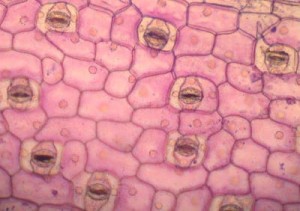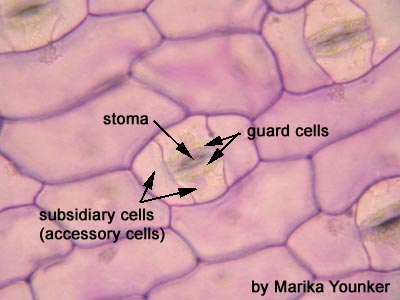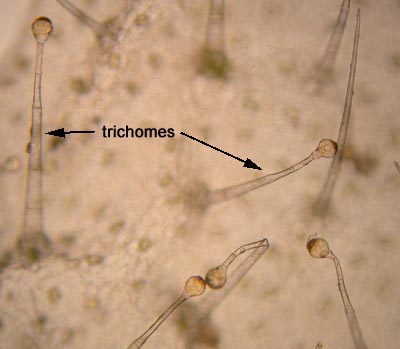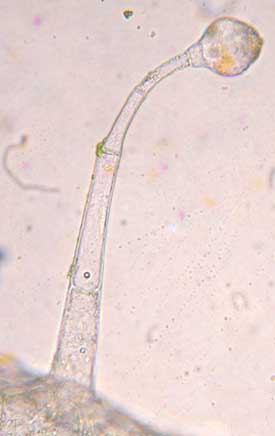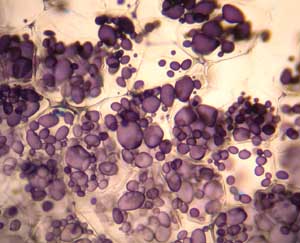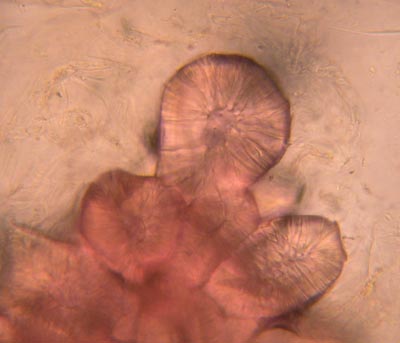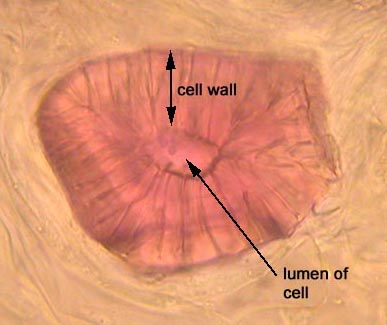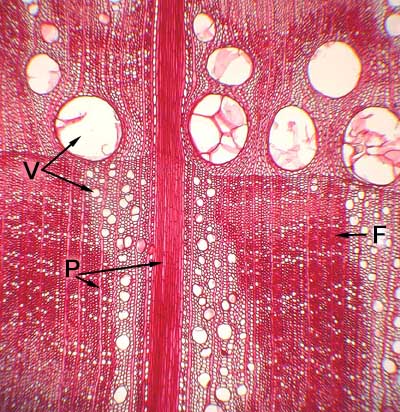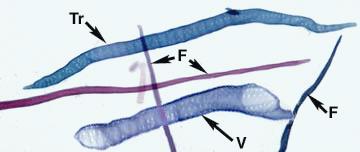1.What is Tissue?
A tissue is a collection of cells that are in a structural and functional unit. A good example of this is the epidermis of a plant. It is a layer of cells that functions in the protection of the underlying cells from desiccation, insects, and pathogens. It is a barrier to the environement. In young plant organs this layer is one cell layer thick. Below is a picture of an epidermal peel from a plant leaf.
The epidermis cannot be a completely impervious barrier. Gas exchange must be accomodated. Pores (stoma) are opened and closed by the activity of the guard cells. Cells associated with the guard cells (subsidiary cells) are also important in the regulation of opening and closing of the stoma.
Hairs (trichomes) are often important features of the epidermis of stems and leaves. Many trichomes, called glandular trichomes, produce the characteristic flavours and fragrances of plants such as mints. The aromatic compounds are often concentrated into a bulb at the tip of the trichome, as pictured below. When touched, the bulb bursts releasing the chemicals. What would the function of such chemicals be to the plant?
,
2. Simple vs. Complex Tissues
Tissues can be categorized based on the cell types that are present. If a tissue contains only one cell type it is called a simple tissue. If a tissue contains more than one cell type it is a complex tissue.
(i) Simple Tissues (made up of one cell type).
Eg. #1 – Parenchyma tissue is made up of parenchyma cells. This tissue has a variety of functions ranging from photosynthesis to storage.
Eg. #2 – Sclerenchyma tissue is made up of either fibres or sclereid cells (it is considered a simple tissue because you will find only sclerids or fibres in the tissue, but they are never mixed within a tissue). You have already been introduced to fibre tissue in the previous section so we will introduce sclereids here. Sclereids are similar to fibres in that the cell walls are very thick and lignified and the cells are dead at functional maturity. The shape of sclereids is highly variable. (Remember fibres are very long and slender). Pulp from a pear was stained with phloroglucinol (stains lignin red/pink) in the preparation below. You can see the clusters of sclereids (stone cells). These cells give pears their characteristic gritty texture.
Note how thick the cell wall is and the small lumen (cavity within the cell).
Another famliar place you find sclereids is the core of an apple.
(ii) Complex Tissue (made up of more than one cell type)
Eg. Xylem
The wood (xylem) of flowering plants is made up of a number of different cell types that contribute to the efficient functioning of the tissue. Conduction of water and minerals in the vertical direction is performed by the tracheary elements (vessel elements and tracheids). The cross-section pictured below is through the wood of oak. Vessels (V) range in width from small to very large. Conduction must also occur in the horizontal direction. This function is performed by the parenchyma cells (P). Water must be loaded into and out of the tracheary elements. The parenchyma cells are clustered in horizontal bands, called rays, that conduct materials laterally. Another main function of the xylem is support for the plant. This is performed primarily by the fibres (F).
Maceration is when the tissue is treated with chemicals that separate the cells. You can see most of the different cell types found in oak (an angiosperm) wood.
3. Organization of Tissues into Tissue Systems
The tissues are organized into three tissue systems: dermal, vascular, and ground. A brief introduction to each tissue system is given below. In the next section will see how they are organized in the different organs.
(i) Dermal Tissue System
The dermal tissue system is the “skin” of the plant. In younger parts of the plant it is made up of a one cell-layer thick tissue called epidermis. In older parts of some plants a tough layer called cork is produced (part of the bark).
(ii) Vascular Tissue System
The vascular tissue system is made up of two types of tissues. You have already been introduced to xylem (which conducts water and minerals from the root to the rest of the plant). The other tissue is called phloem. This tissue conducts food that is generated in the leaves to other parts of the plant.
Both of the conducting tissues of the vascular tissue system are complex. In each, elements are responsible for vertical conduction. These cells are elongate. In the xylem the tracheary elements are dead at functional maturity, whereas in the phloem the conductive cells (sieve elements) are living. The sieve elements do not contain nuclei, but are closely assoiated with neighbouring parenchyma cells that control the activities of the sieve elements. In both xylem and phloem horizontal conduction betweeen vascular tissues is via bands of parenchyma cells (rays).
(iii) Ground Tissue System
The ground tissue system is found between the dermal tissue system and the vascular tissue system. In some texts you may find it described as filler. Many important functions are performed in the ground tissue system. Parenchyma tissue for instance, can have a number of different functions depending on its location. In some parts of the plant it may be important for storage, while in other parts it is photosynthetic. Another common tissue you will find is sclerenchyma (a simple tissue), which is important for support.
Note: each tissue system can be made up of more than one tissue type.

